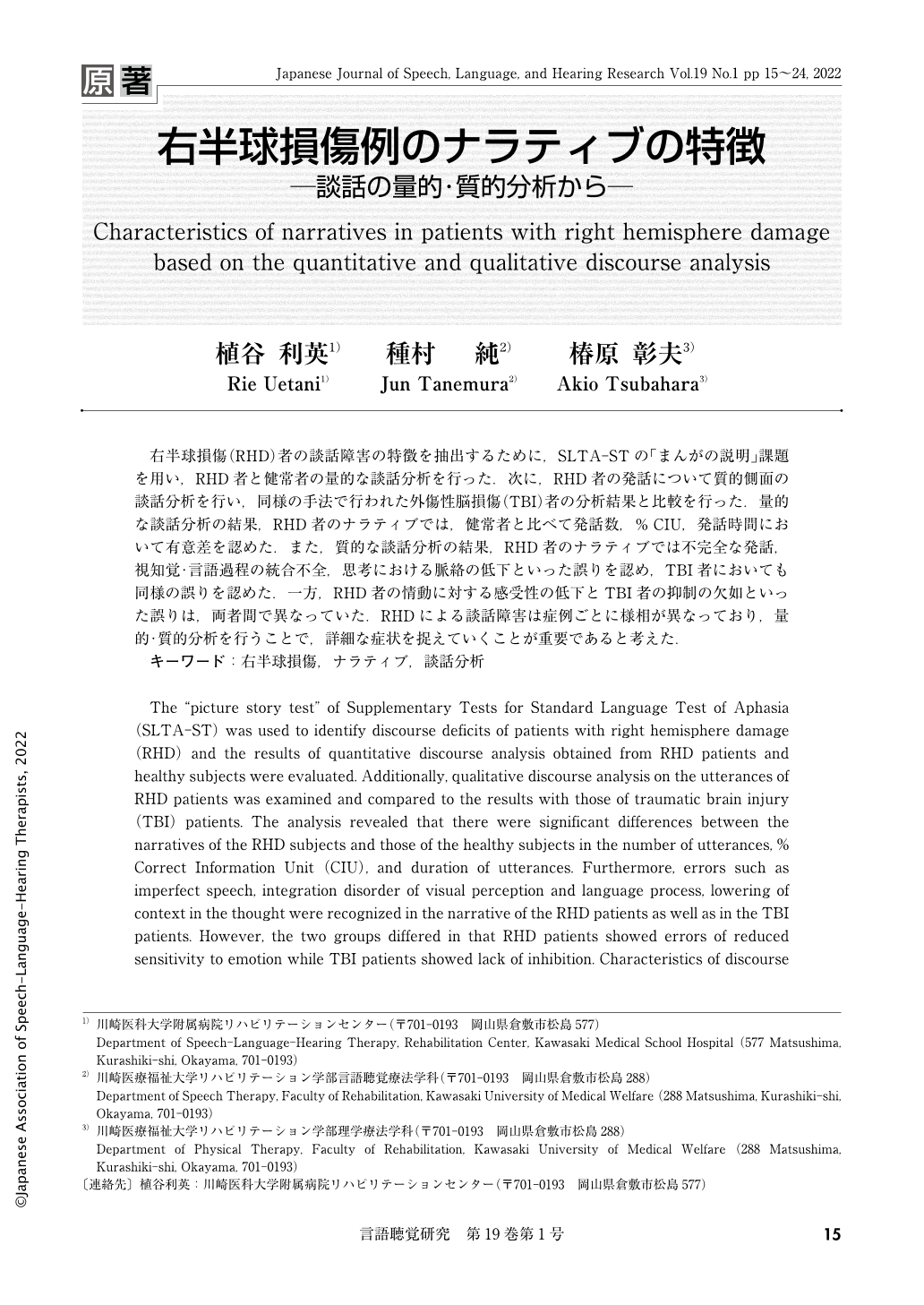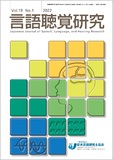Japanese
English
- 有料閲覧
- Abstract 文献概要
- 1ページ目 Look Inside
- 参考文献 Reference
- サイト内被引用 Cited by
右半球損傷(RHD)者の談話障害の特徴を抽出するために,SLTA-STの「まんがの説明」課題を用い,RHD者と健常者の量的な談話分析を行った.次に,RHD者の発話について質的側面の談話分析を行い,同様の手法で行われた外傷性脳損傷(TBI)者の分析結果と比較を行った.量的な談話分析の結果,RHD者のナラティブでは,健常者と比べて発話数,%CIU,発話時間において有意差を認めた.また,質的な談話分析の結果,RHD者のナラティブでは不完全な発話,視知覚・言語過程の統合不全,思考における脈絡の低下といった誤りを認め,TBI者においても同様の誤りを認めた.一方,RHD者の情動に対する感受性の低下とTBI者の抑制の欠如といった誤りは,両者間で異なっていた.RHDによる談話障害は症例ごとに様相が異なっており,量的・質的分析を行うことで,詳細な症状を捉えていくことが重要であると考えた.
The "picture story test" of Supplementary Tests for Standard Language Test of Aphasia (SLTA-ST) was used to identify discourse deficits of patients with right hemisphere damage (RHD) and the results of quantitative discourse analysis obtained from RHD patients and healthy subjects were evaluated. Additionally, qualitative discourse analysis on the utterances of RHD patients was examined and compared to the results with those of traumatic brain injury (TBI) patients. The analysis revealed that there were significant differences between the narratives of the RHD subjects and those of the healthy subjects in the number of utterances, % Correct Information Unit (CIU), and duration of utterances. Furthermore, errors such as imperfect speech, integration disorder of visual perception and language process, lowering of context in the thought were recognized in the narrative of the RHD patients as well as in the TBI patients. However, the two groups differed in that RHD patients showed errors of reduced sensitivity to emotion while TBI patients showed lack of inhibition. Characteristics of discourse disorder caused by RHD were different in each patient. It was thought to be important to carry out both quantitative and qualitative analyses to identify symptoms in detail.

Copyright © 2022, Japanese Association of Speech-Language-Hearing Therapists. All rights reserved.


